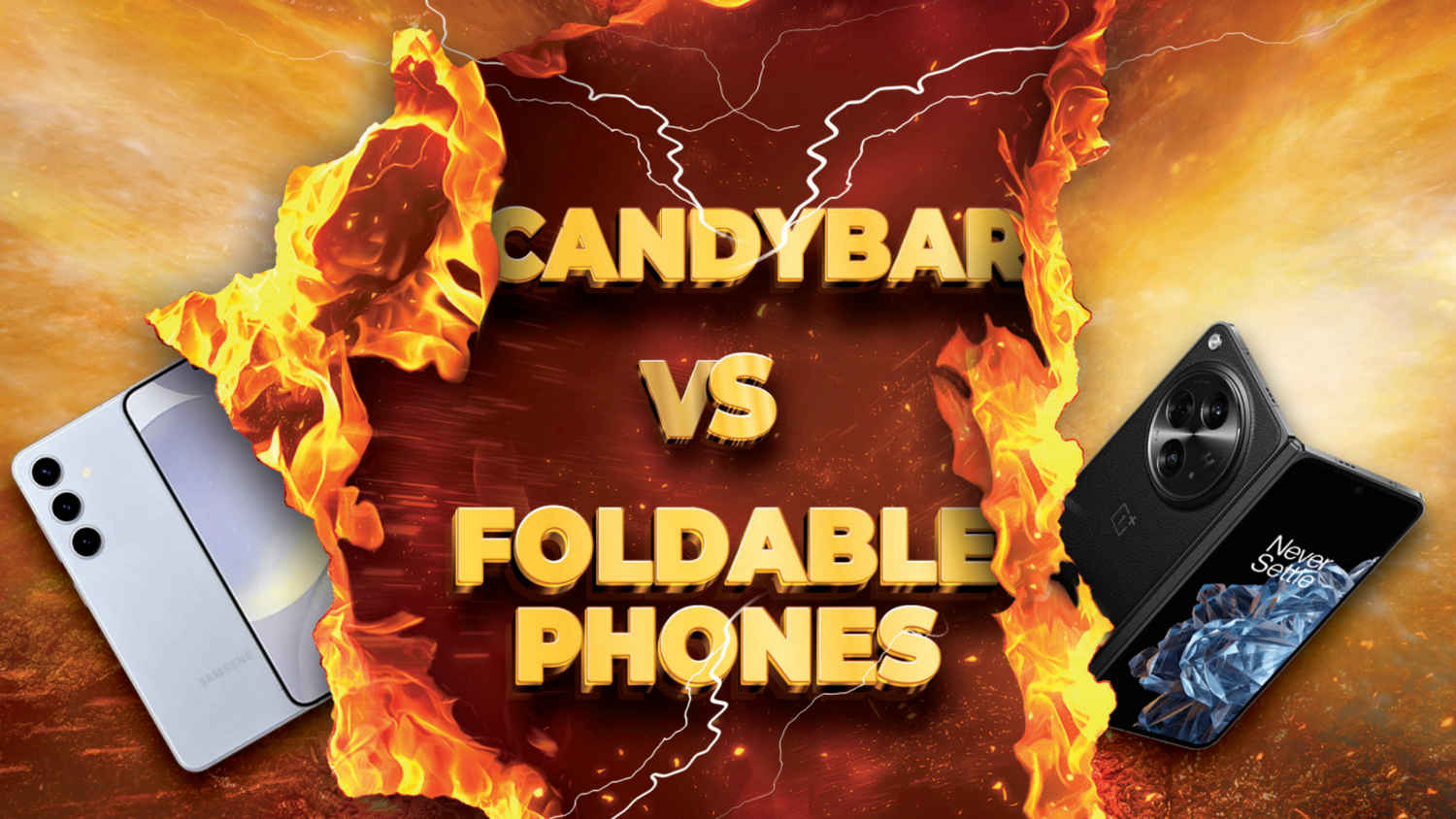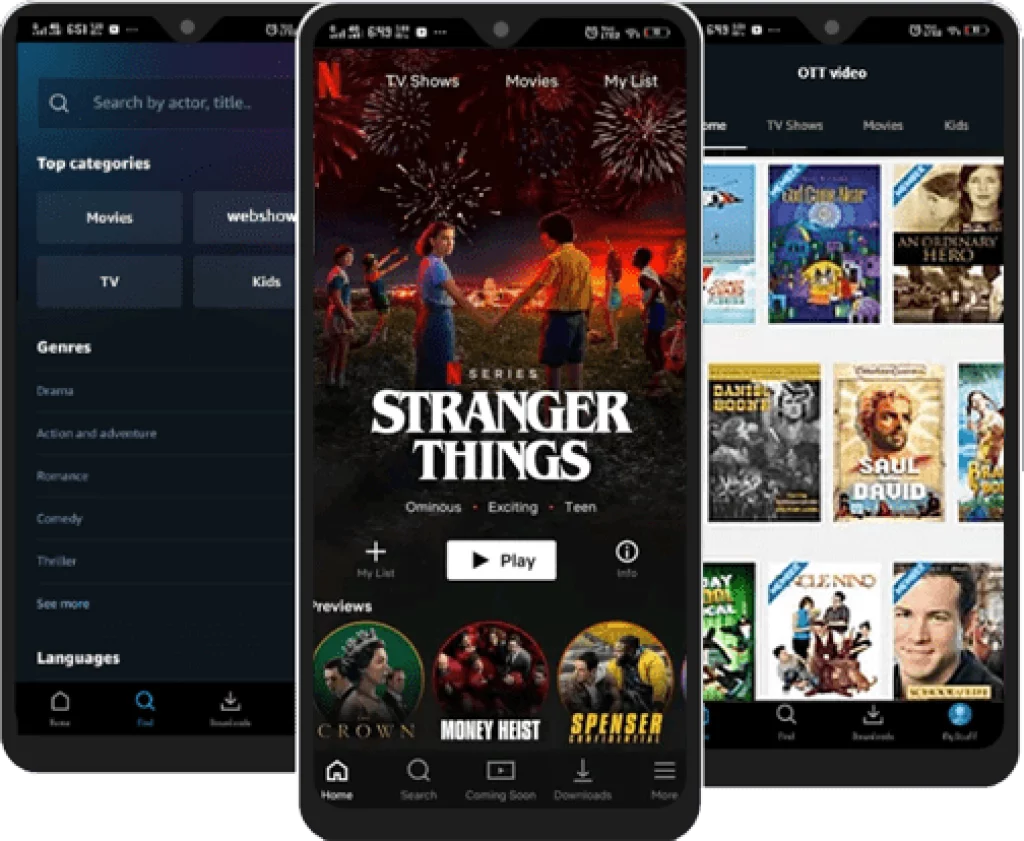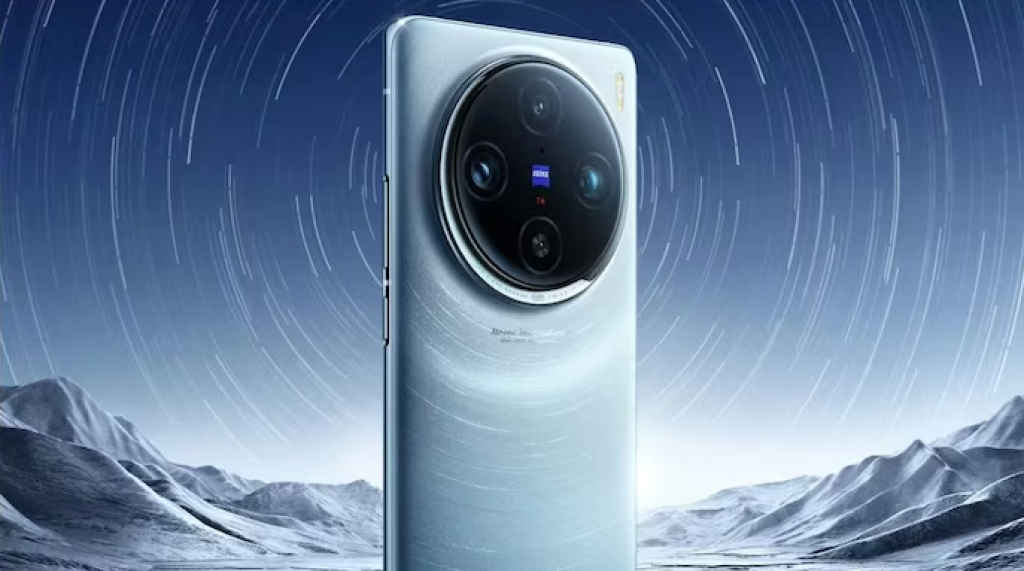Candybar vs Foldable Phones: Which one to buy? Pricing, form factor, durability, and more

In a landscape brimming with constant innovation, two distinct phone types continue to capture consumer attention – the classic candybar form factor phone and the cutting-edge foldable phone. And the debate of Candybar vs Foldable Phones rages on! For the uninitiated, a candy bar phone is any typical rectangular mobile phone that resembles a candy bar while a foldable phone is a type of smartphone with a display that can be folded in half, like a book or a clamshell.
 Survey
SurveyWhile both serve the fundamental purpose of well… being a smartphone for your daily needs, they cater to vastly different needs and preferences. Choosing between these two options can feel like navigating a modern mobile maze, leaving you wondering which path best suits your lifestyle. So, let’s delve further into the world of candybar smartphones and foldable smartphones, and figure out their strengths and weaknesses in certain key parameters so that you can choose the apt one for your needs.
Multitasking Mastery – Candybar vs Foldable Phones which one wins?
When it comes to juggling multiple tasks simultaneously, foldables take the crown. Their ability to unfold into a tablet-like size (at least, the book-like foldables) makes them ideal for running multiple applications at once. For example, imagine editing documents on one half of the screen while video conferencing on the other.

Even tasks like browsing and messaging become more seamless with the increased screen real estate. Conversely, candybar phones can struggle here; not all of them but most surely do due to their less-than-ideal multitasking UI. Their smaller screens make multitasking cumbersome, requiring frequent app switching and zooming. And if you’re hoping to have any kind of flow when working, these issues will surely disrupt that. Of course, all of these advantages are lost if you go for a flip-style foldable, given they have the same real estate as a candybar phone.
Content Consumption King
For consuming multimedia content, the book-style foldable phone once again emerges victorious. Flip foldables are in the same category as candybars in this scenario. A foldable’s large screen size offers a more immersive viewing experience, allowing you to truly sink into movies, shows, and games. Reading ebooks and browsing the web are infinitely more enjoyable with the increased real estate.

Imagine catching up on your favourite show on a bus commute with a screen size comparable to a small tablet, compared to the more cramped experience on a candybar phone. While candybar phones suffice for quick tasks like checking emails and social media updates, they may not be ideal for extended entertainment sessions. Especially since prolonged use on a smaller screen can strain your eyes.
Durability Dilemma
This is where the foldable form factor loses points. A candybar phone’s simple design and lack of moving parts make it significantly more resistant to drops, bends and damage from dust or water. This makes them perfect for individuals with active lifestyles or those prone to accidental bumps and tumbles (like me).

Whether you’re an outdoor enthusiast or simply clumsy, the candybar phone offers peace of mind. Foldables, while gradually improving in durability, still raise concerns. True, some of these come with IP ratings, but it is often not a high rating such as IP68 as one would see on flagship phones such as the latest Samsung Galaxy S24 Ultra. Foldable phones’ hinges and folding mechanisms are potential weak points, and the larger, thinner screens are generally more susceptible to damage. Additionally, the folding display usually is a mix of glass and plastic, which gets scratched pretty easily. Not to forget that the potential repair costs for foldables can be significantly higher.
Form Factor Frenzy
In terms of form factor, the choices couldn’t be more contrasting. Candybar phones offer a familiar, pocket-friendly design that easily fits into any pocket or bag. This makes them ideal for situations where quick access and one-handed operation are crucial.
Foldables, on the other hand, sacrifice pocketability for versatility. They are thicker and bulkier when folded, which can be inconvenient for carrying around. While they offer a tablet-like experience when unfolded, they require two hands to operate effectively in this state. This can be a deal-breaker for users who prioritise one-handed use or require their phone to be readily accessible in their pocket.
Hardware Hindrances
While foldables boast a cutting-edge form factor, they often face limitations in other crucial hardware components due to their compact folded state. To maintain that size, manufacturers often compromise on other elements. Notably, cameras in foldables tend to be inferior to those found in high-end candybar phones. The space constraints in foldables limit the size and quality of the lenses, which can result in lower image and video quality compared to their candybar counterparts. It is also a lot rarer to see foldables with high-quality periscope lenses because of how much room they require.

Similarly, battery life in foldables can suffer. The larger display can often lead to shorter battery life compared to candybar phones. This can be particularly frustrating for users who rely on their phones for extended use throughout the day.
Pricing Paradox in the Candybar vs Foldable Phones debate
The pricing structure of these two phone types reflects their target audiences. Candybar phones are significantly cheaper than their foldable counterparts – for example, a foldable with a less powerful SoC can be priced the same as a candybar phone with the latest and greatest processor. This makes candybar phones an attractive option for budget-conscious individuals or those who prioritise affordability over cutting-edge form factors, multitasking, and content consumption.
For users looking for a reliable phone for communication and light entertainment, candybar phones offer an excellent value proposition. Conversely, foldables represent the pinnacle of mobile innovation and come with a hefty price tag. They are targeted towards early adopters and tech enthusiasts willing to shell out a premium for the latest advancements in mobile technology. If you crave the novelty and innovative features of a foldable, be prepared to pay a significant price for the privilege.
Candybar vs Foldable Phones – Beyond the Basics
While the core aspects of multitasking, content consumption, durability, form factor, hardware, and pricing provide a solid foundation for comparison, there are additional considerations to factor in when choosing between a candybar and a foldable phone:
Software Optimisation: Foldables are still a relatively new technology, and software optimisation for these devices is still evolving. Some apps and games may not be fully optimised for the larger, foldable display, leading to potential glitches or awkward UI scaling. Candybar phones, with their established form factor, generally benefit from mature and well-optimised software experiences.
Ecosystem Integration: Foldables, as a relatively niche product category, may have limited accessory options compared to candybar phones. Cases, chargers, and other peripherals may be more readily available and affordable for candybar phones due to their larger user base.
Aesthetics and Personal Preference: Ultimately, personal preference plays a significant role in the decision-making process. Some users might find the innovative design of foldables appealing, while others might favour the familiarity and practicality of candybar phones. Consider which form factor resonates more with your typical phone usage patterns.
Tailoring Your Choice
Choosing between a candybar phone and a foldable phone boils down to understanding your individual needs and priorities. If you prioritise affordability, durability, the latest camera hardware, and one-handed use, a candybar phone might be the perfect fit. If you value a larger screen for multitasking and content consumption, a foldable phone might be worth considering. However, be prepared for the higher price point and potential drawbacks like software optimisation until the technology fully matures. That being said, the foldable market is growing at a tremendous rate, and the technology is evolving faster than one could imagine. So, whether you choose a reliable classic or embrace the innovative future, the choice ultimately depends on what matters most to you in your mobile experience.
This article originally appeared in Digit Magazine’s March 2024 issue. Order your copy of the Digit Magazine here.
Dhriti Datta
Perpetually sporting a death stare, this one can be seen tinkering around with her smartphone which she holds more dear than life itself and stuffing her face with copious amounts of bacon. View Full Profile